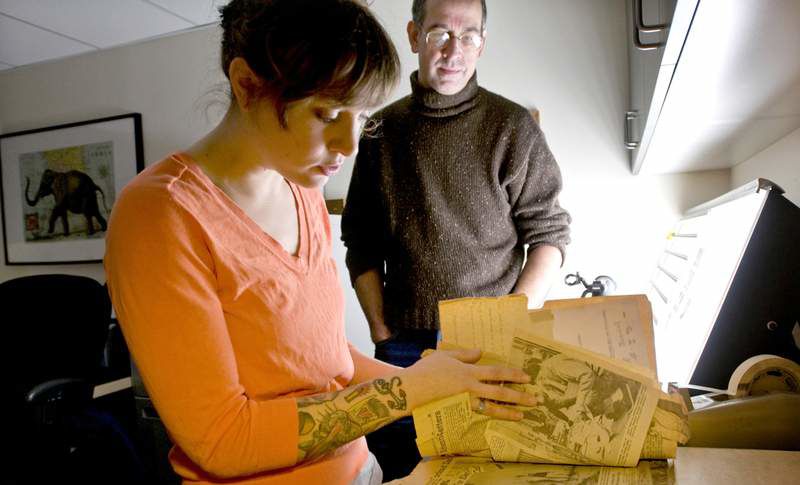Oregon Zoo gains a trunkful of history by chance
Published 4:00 am Sunday, January 31, 2010

- Carli Davidson and Larry Clark look over material about the Oregon Zoo earlier this month from a box that Clark bought for $4 at an estate sale. The archive from the 1950s and '60s shows how science and husbandry have changed zoo operations.
PORTLAND — The estate sale brimmed with photo negatives and slides, military memorabilia, antiquated mountaineering gear and a box that so intrigued Larry Clark he sprang for the $4 price. Its label read simply “zoo.”
Good thing he snagged it: Images, memos, letters and yellowed news clippings inside the box fill in missing pieces of Oregon Zoo history. The unexpected archive provides glimpses into how things were in the 1950s and ’60s, and illuminates ways that science and husbandry have changed zoo operations. Plus, its contents make you wonder how things might have been if some outlandish ideas had taken hold.
Imagine, for example, Packy, the zoo’s prize elephant, confined to a dungeon because of his frightful behavior.
Or a proposal to use pachyderms to help log Northwest forests.
But first things first.
Clark, a southeast Portland antique dealer, routinely peruses estate sales. In November, he spotted one across the street from his grandparents’ old place in Vancouver.
Years earlier, he’d known the homeowner enough to exchange a smile or a wave. But walking through the man’s house, he wished he’d known him better. “Somebody cool lived here,” he remembers thinking.
Clark is too young, at 49, to recall the hoopla surrounding April 14, 1962, when the Portland Zoo welcomed wobbly little Packy, the first elephant born in the United States in 44 years. And he had no idea that his grandparents’ neighbor was Leverett Richards, The Oregonian reporter who shot countless photos and produced reams of copy about the big delivery, among other topics.
Richards, who retired as a lieutenant colonel after 30 years in the U.S. Air Force and Air Force Reserves, wrote for The Oregonian from 1931 until long after retiring from the newsroom in 1986. He traveled to both poles and 75 countries in between, and reported on everything from the Vietnam War to Mount St. Helens’ 1980 eruption. Richards died in 2000 at 92.
He must have been a packrat, too, given the stacks of shorthand notes, rough drafts, magazines, brochures, Christmas cards and other stuff relegated to boxes in his estate sale.
Cast of characters
Clark nosed through the box he bought, scanned the most interesting photos into his computer, then gave the contents to Carli Davidson, his next-door neighbor. Davidson, a commercial photographer, volunteers twice a week in the zoo’s photography/videography department.
She lugged the box along on her next volunteer day and gave it to Michael Durham, manager of the zoo’s image library.
In recent weeks, he has picked through envelopes of negatives, prints and slides, scanning the best into his computer and adding them to the zoo’s digital files.
The files reveal a cast of quirky characters who worked at the zoo during an era when the nation was racially segregated, the space race was on and turning wild animals into captive specimens was widely accepted.
Little science was available to guide zookeepers through an elephant’s pregnancy and delivery. “They were figuring this out as they went along,” says Davidson, who combs through the files during her shifts.
Notes and stories provide insight into Jack Marks, the zoo director of that era, Matthew Maberry, then zoo veterinarian, and Morgan Berry, the elephant importer and trainer who supplied the zoo its original Asian elephant herd.
Richards’ files also hold a letter from Don Clark, manager of the Seattle-based Northwest Hardwood Association, to Tom McCurdy of Portland’s Pacific Reforestation Inc.: “Is it possible,” Clark asked, “the Portland Zoo might allow Thonglaw (a bull elephant) to be used for experimental logging in the vicinity of Portland?”






